The terrace bank – extreme rock gardening
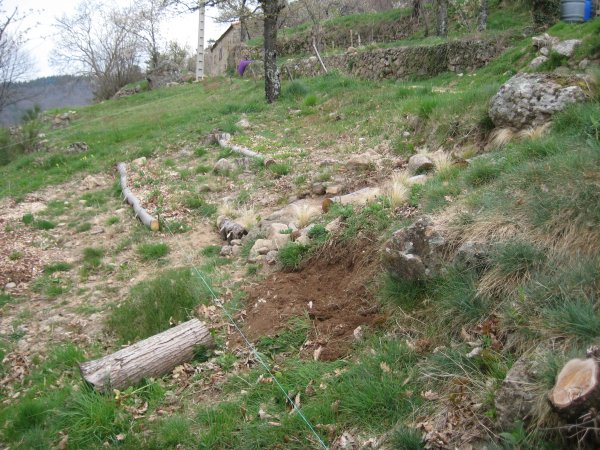 If ever a group of plants have had to work hard to survive, this is the part of the garden where you will find them.
If ever a group of plants have had to work hard to survive, this is the part of the garden where you will find them.
This is a garden built on rock. And the topsoil is thin as can be. Why? It’s a slope of rock that was denuded of vegetation by 20 years of chickens.
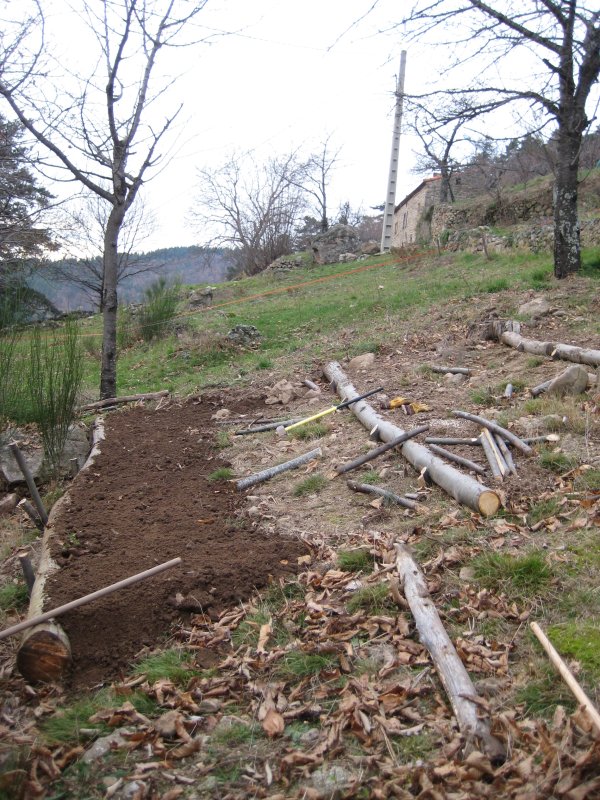 Yes, this is the bare and sad patch of sloping land behind the potting shed. Originally the chicken shed. I couldn’t possibly leave it as a sorry scrubland. So I had to come up with a plan.
Yes, this is the bare and sad patch of sloping land behind the potting shed. Originally the chicken shed. I couldn’t possibly leave it as a sorry scrubland. So I had to come up with a plan.
And the solution was to cut down some trees in the forest, drag the trunks down the mountain, hammer them in place with chestnut stakes, and fill in a teensy bit of soil behind the barrier.
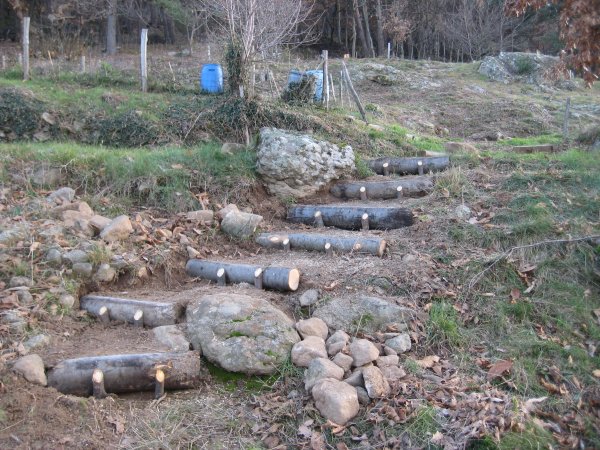 Instant gardening. Had I known what I know now, I would have made the effort of doubling the depth of the terraces by adding a second layer of long chestnut trunks on top of the first.
Instant gardening. Had I known what I know now, I would have made the effort of doubling the depth of the terraces by adding a second layer of long chestnut trunks on top of the first.
But I had used up the goodwill by asking everyone to cut down seven trees. They are exceptionally heavy. Even if they are being dragged down the hill.
Add in the chestnut steps I need to scramble up this slope and the hard landscaping was complete.
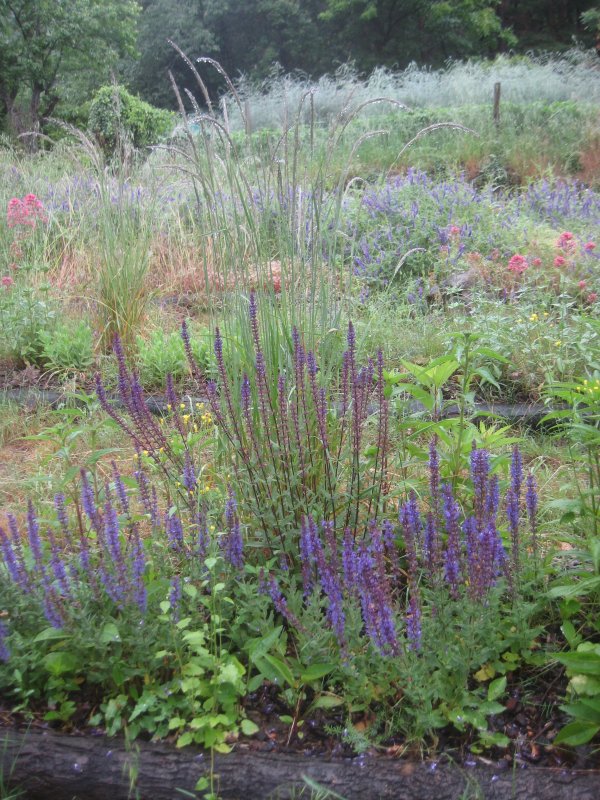 And I thought I could work with even this tiny bit of soil depth.
And I thought I could work with even this tiny bit of soil depth.
The weeds certainly thrive here. But so too do a choice selection of plants.
My favourites are the sedums, salvia, agastache and valerian. And the self-sown teasels which throw up dramatic spikes every few years.
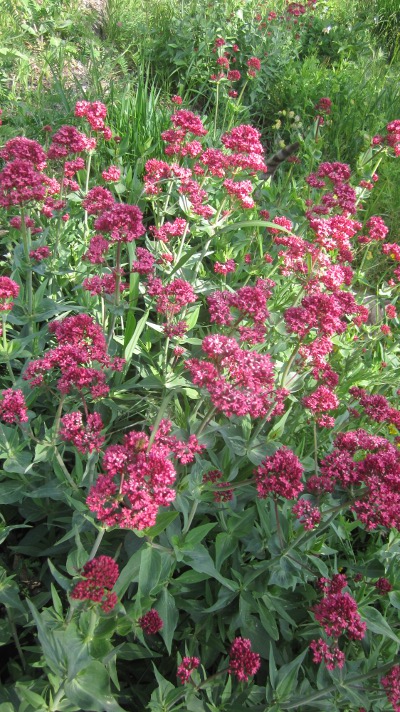 I also call this my nursery beds. If I was being pretentious I could say that I put plants here to trial them for their drought tolerance and hardiness.
I also call this my nursery beds. If I was being pretentious I could say that I put plants here to trial them for their drought tolerance and hardiness.
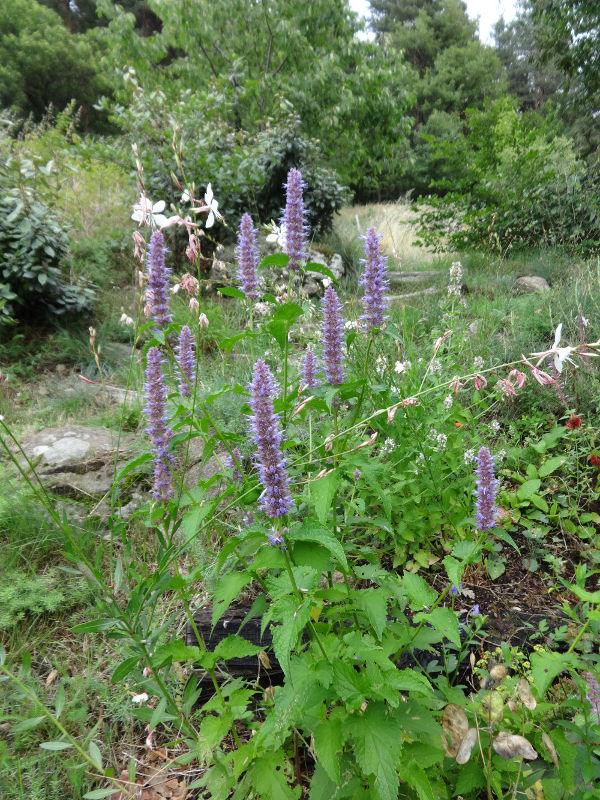 But actually I plonk a lot of things here when I can’t think where to put them. Some of them are invasive gifts.
But actually I plonk a lot of things here when I can’t think where to put them. Some of them are invasive gifts.
As a consequence I have a weird selection of phlox, peonies, asters, self-sown clary sage which I cannot quite ever remove. And some leftover plants from previous garden designs.
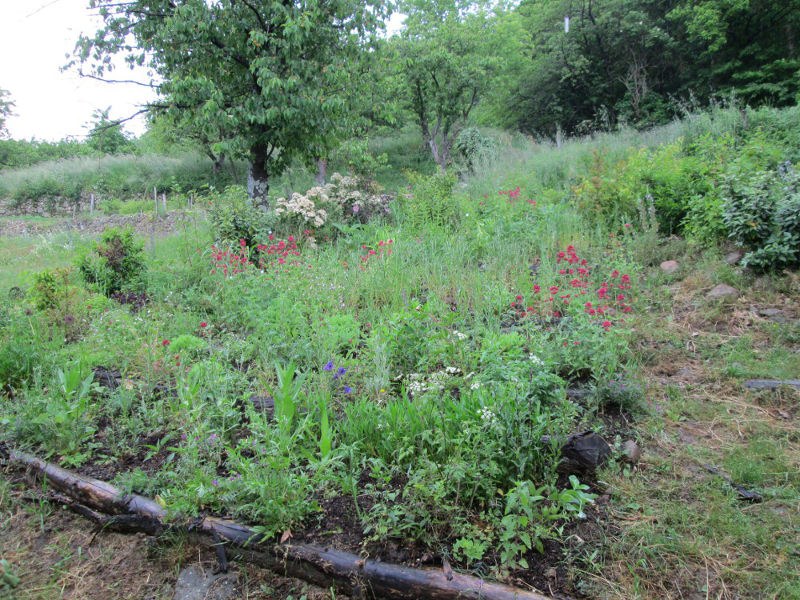 Ah yes, the designs. There have been a few and I’m not done yet.
Ah yes, the designs. There have been a few and I’m not done yet.
My first was inspired by a magazine article (that great place of promise) which showed echinacea, calamagrostis Karl Foerster grasses and Joe Pye Weed (eupatorium) all together as a rather stunning hedge.
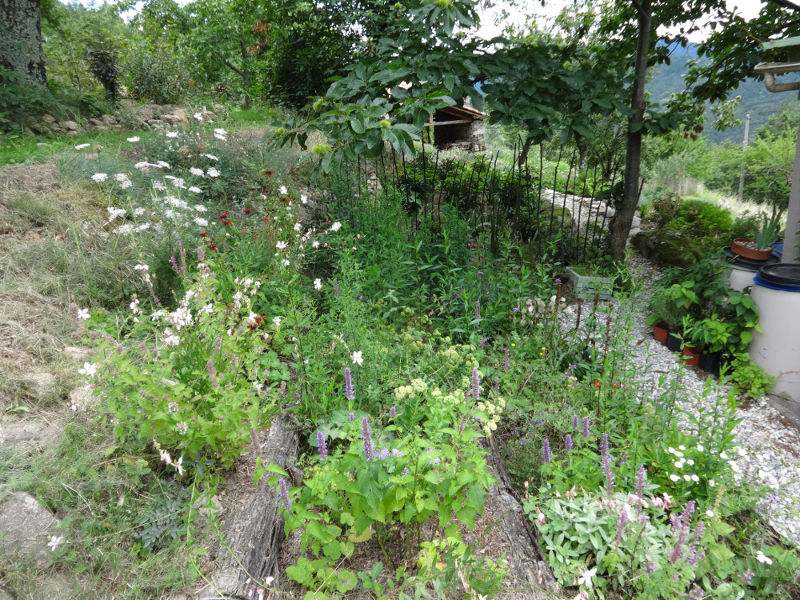 And before I even considered the suitability of any of these varieties in acid soil in a few inches of soil in a drought with hard winters…. I had bought them.
And before I even considered the suitability of any of these varieties in acid soil in a few inches of soil in a drought with hard winters…. I had bought them.
It sort of worked. But none of these plants were happy.
I should have paid more attention to my surroundings. Valerian (centranthus ruber) grow brilliantly out of rock walls here. So that was next. And it has been a success.
The agastache took a few years to realise they weren’t going to get any pampering and I now collect the seed every year from this brilliantly adapted plant.
I lifted all the grasses as they were just too tall for the bank, but one stubbornly refuses to come out. It is a miscanthus sinensis which I must try and remove again. It goes onto my spring list when I am cutting back all the grasses, and I fail every year to get out the clump.
And from 2013 I decided to try and increase the quantities of the plants I have – the valerian, the salvias and the sedums particularly.
And hopefully I will then be able to position them into a more coherent design.
But with this thin soil, they don’t romp away.
You can probably guess that this is my problem part of the farm. In fact my best view of the terrace bank is when I am sitting on my chaise longue in the potting shed and gazing out of the very clean windows looking north up to the terrace bank.
If all goes well I have a cat on my lap, and the windows really are clean, or just wide open. I look up and see a sea of foliage and chaos, but the bones of a design.
This usually happens late in spring just after I have done a mad session of weeding and mulching and the terrace doesn’t look like a disaster zone. So on average that is just one morning a year.
***
2017 Update
This is just an excuse to show off. Three years on from that first Farm Tour post meet the zing of delights of the terrace bank today.
But first a reminder before we plunge: here is a shot of what it looked like before I decided to turn it into a sort of garden.
The whole bank (there are about ten narrow beds now) gets a thorough weed in spring – hence the photos I’m about to show you – and then I tend to avert my gaze.
The beds on the left hand side are drought stricken in full sun. And the ones on the right are drought stricken in deep shade. There’s a chestnut tree looming overhead.
From my chaise longue in the potting shed this is now what I see.
Left side.
Right side.
I love how the virginia creeper which is supposed to be on the roof but is actually dangling down over the windows wants to get in the shot.
The brightest colour comes from a good reddish (well, crimson) variety of centranthus ruber (valerian). It’s a thuggish weed. But you can yank it out.
Tall airy gorgeous flowers in front are some sown from seed dianthus carthusianorum (Carthusian pink),
And the wonderful bee loving knautia macedonica. I’m dreadful with labels, so when it came time for me to recall what plant I had sown in this part of the garden I had to rely on my favourite encyclopedia of plants – Andrew.
I sent him this photo with a plaintive bleat. And about ten seconds later he replied with the answer. (Note the rare sighting of the lesser spotted pair of gloves. There are brambles all throughout these beds, plus the extra thrill of ant nests.)
Now I boast about not watering, but the knautia and the dianthus were sown from seed in March last year and I think I planted out the small seedlings around May. No fertilizer, no compost. They have to get used to their dreadful conditions…. but actually they are the conditions they probably encounter in the wild. But I did drench each plant every fortnight with a bucket of water until September.
And they have now rewarded me with this fantastic display of flower.
The phlomis (also sown from seed) are an experiment as I’m not sure they are fully hardy. I killed a lot in my first few years. But with the hedge just beside them I think they get some shelter from our minus 12C weather in winter.
I really, really prefer the phlomis purpurea but the yellow works as it’s such an upright statuesque plant. I love them when they have gone over and I can cut the dried seedheads. (I must remember to collect the seeds this year.)
And the santolinas are in their perfect dry environment here. I might even try leaving them be and see how they do in flower. In slightly richer soil in the barn garden and on a steep slope they flop alarmingly.
One thing I have learned about this gardening lark is that time is something you have to factor. This time last year the beds looked dull and weedy. The santolinas I took from cuttings and planted were just sulking and didn’t even look as through they would thrive at all. But given another season they are now taking off.
The sedums are perfect for this dry slope. I should get some good colour in autumn from the dozens of plants. Each year I take cuttings and each year I vow to do even more than the thirty or so plants I manage to create. I’ve already earmarked places in the garden where I can add more – and next week I’ll plant them out.
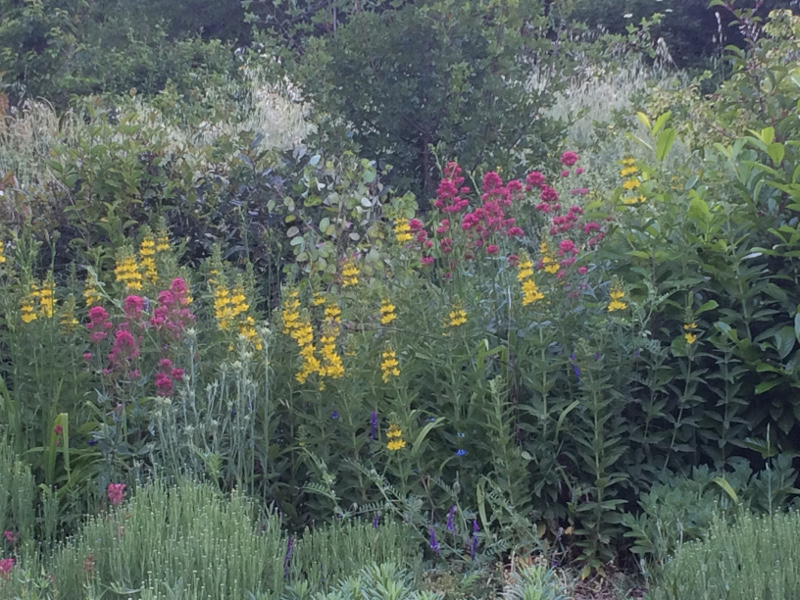
And what a treat to find the nigella still self seeding about. Dear little blue flowers.
Most things are strangled by this annual blue vetch which I love. It does drape rather fetchingly But I can only tolerate its strangling habit for the sake of the photo shoot, and then I realize that I have to free the roses from the weight of the plant.
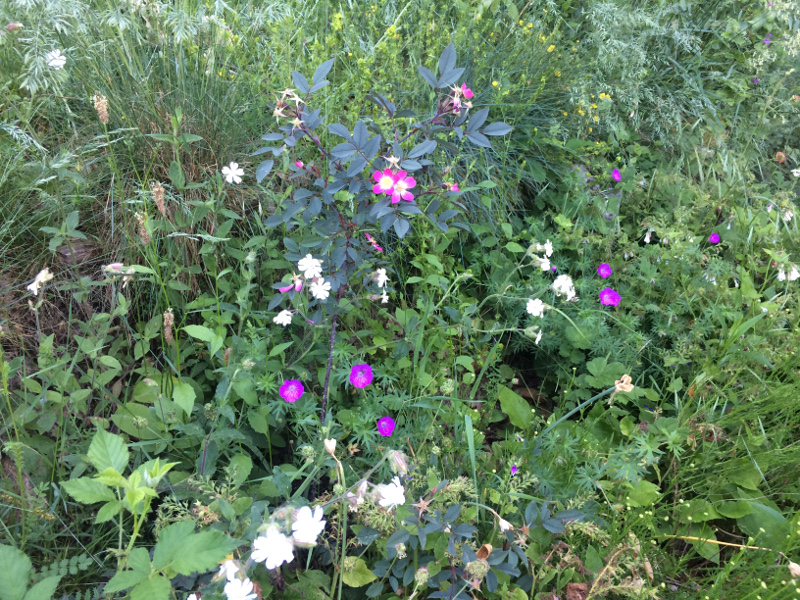
And a salutary reminder than you have to be patient; especially in a challenging garden that experiences extremes of temperature and drought.
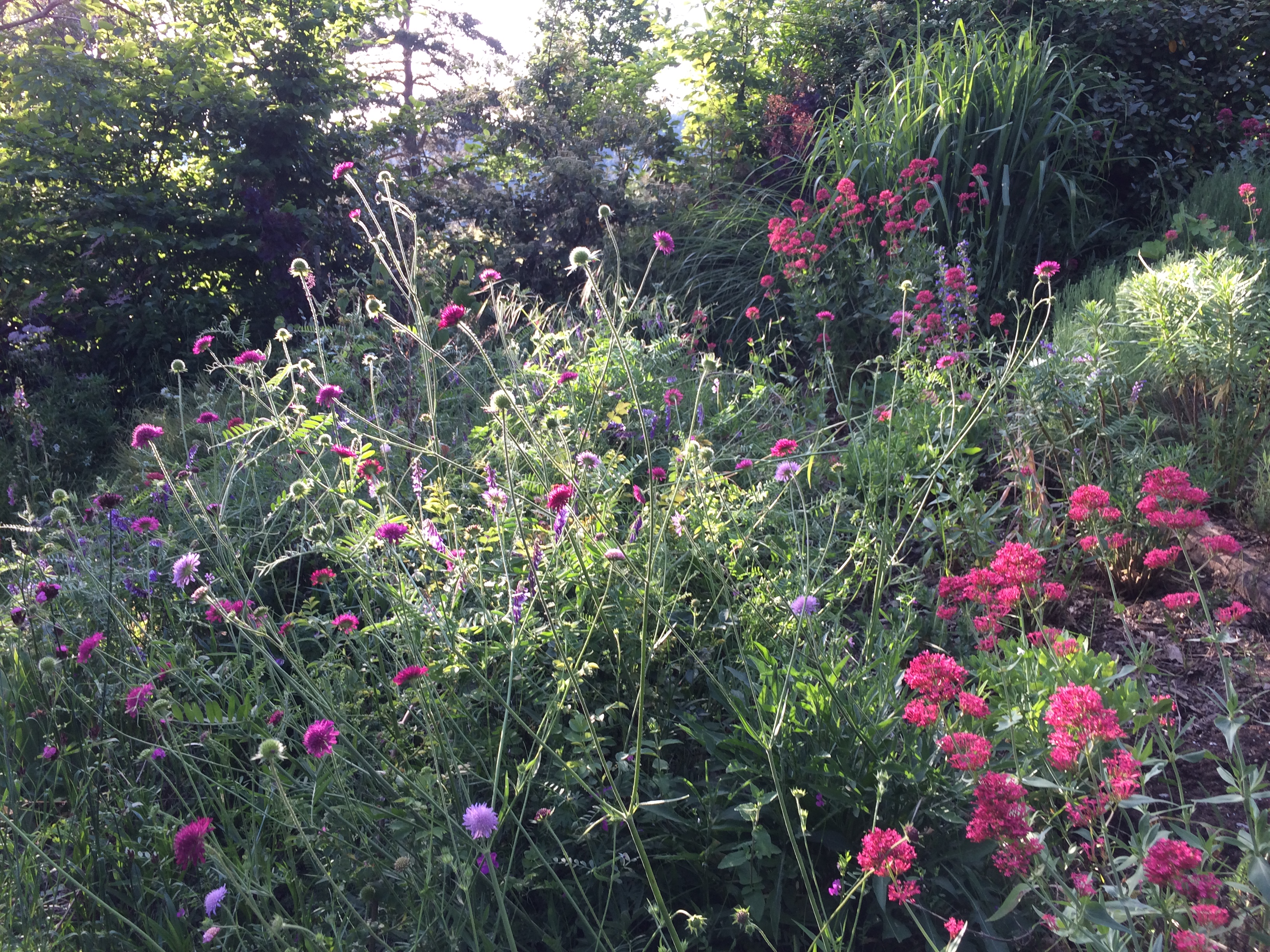
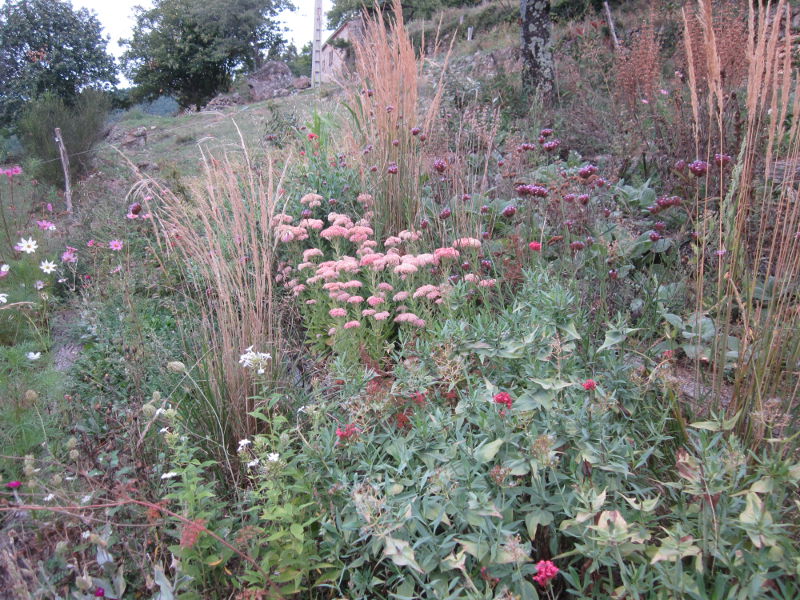
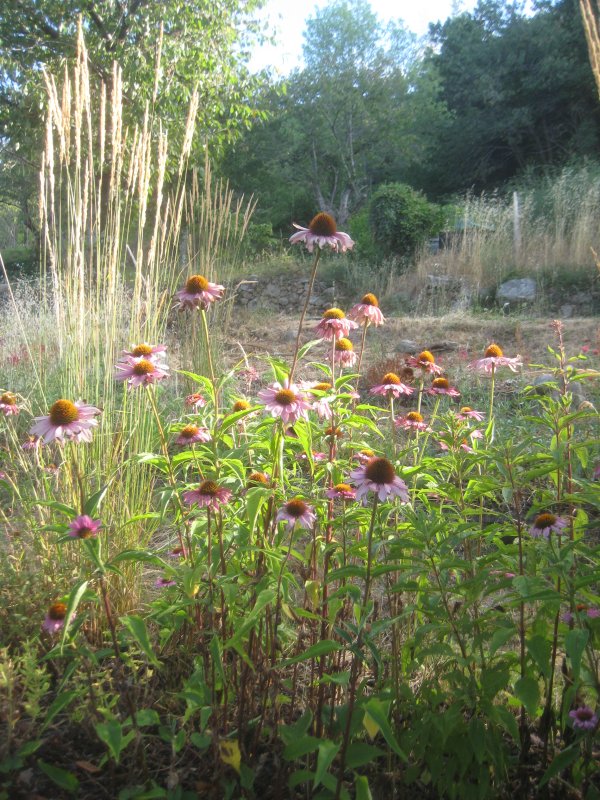
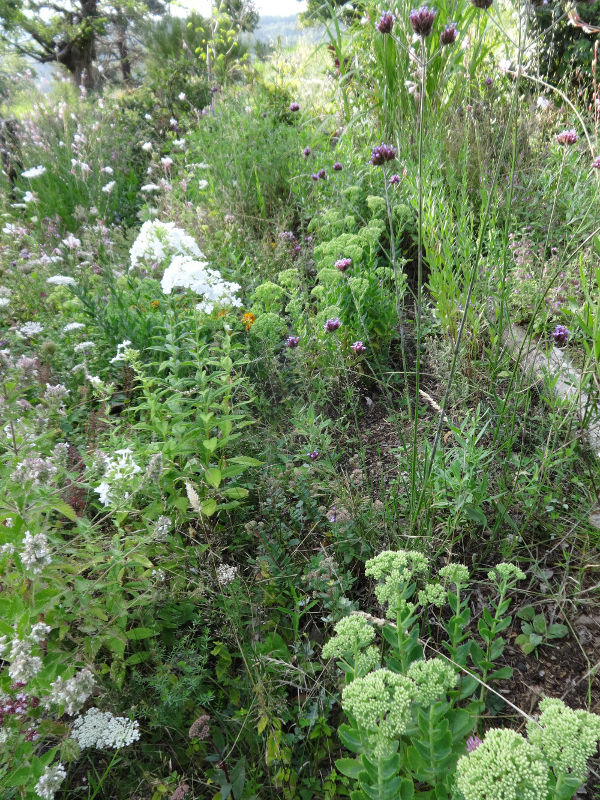
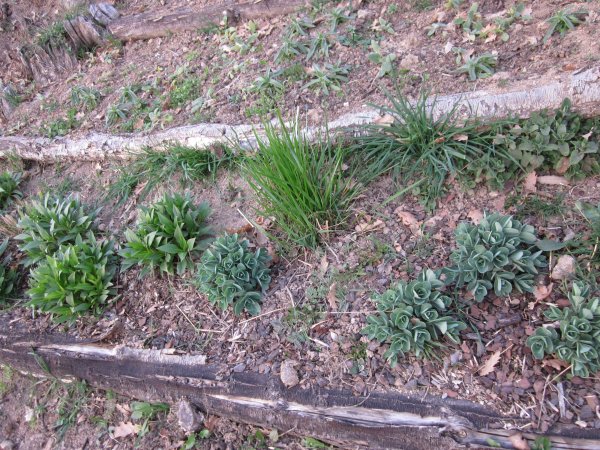
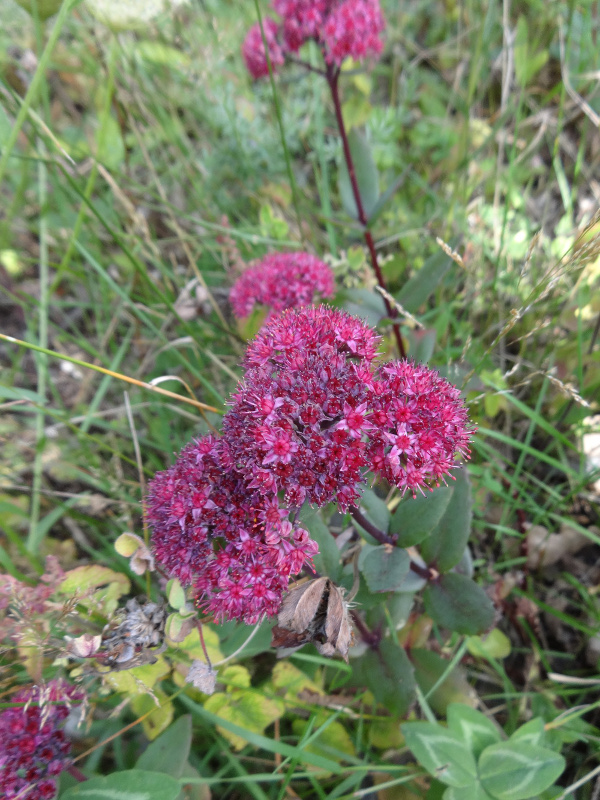
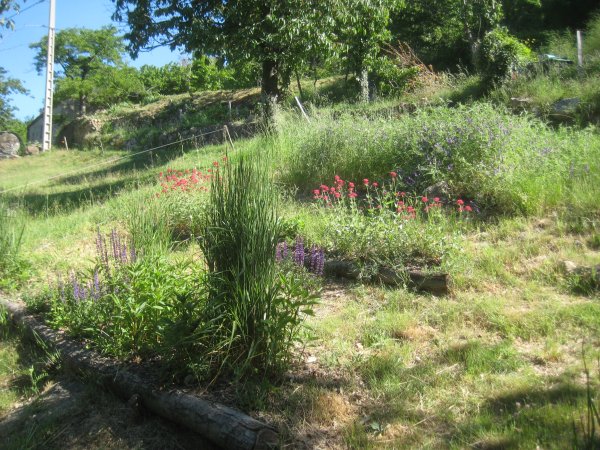
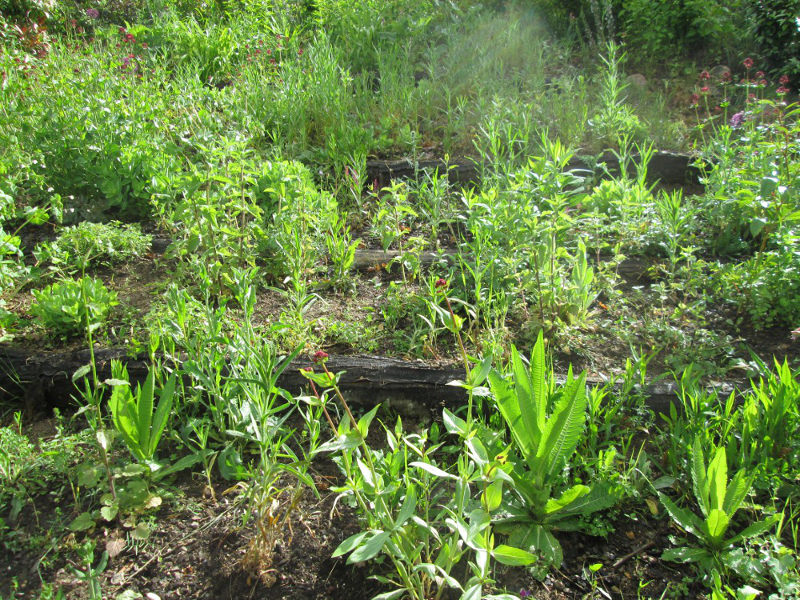
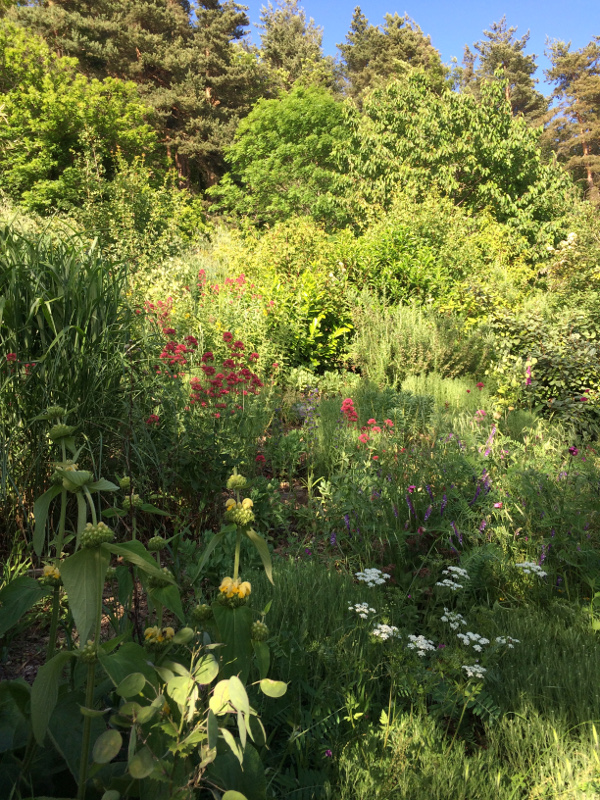
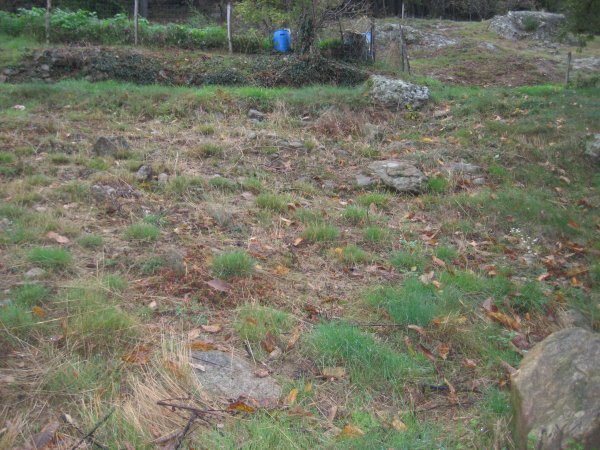
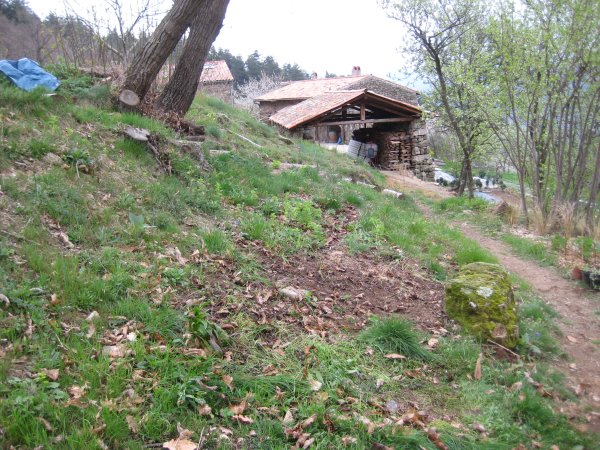
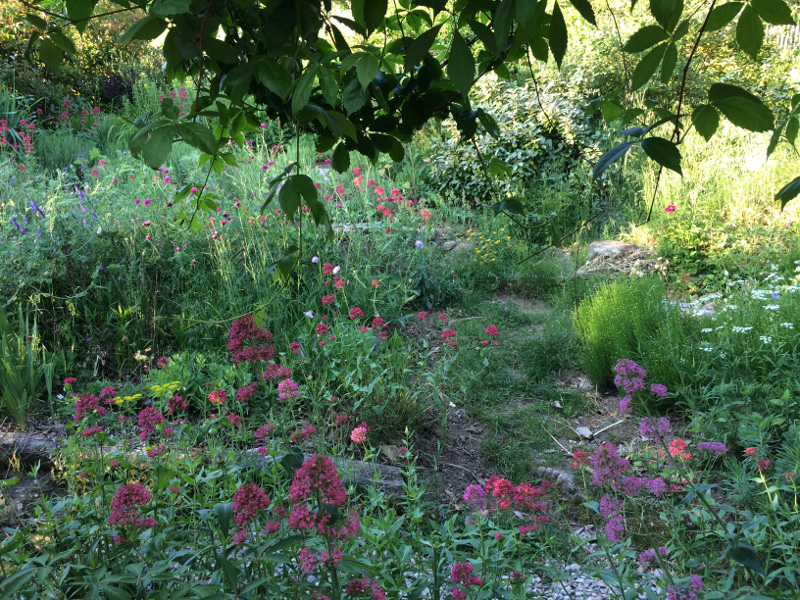
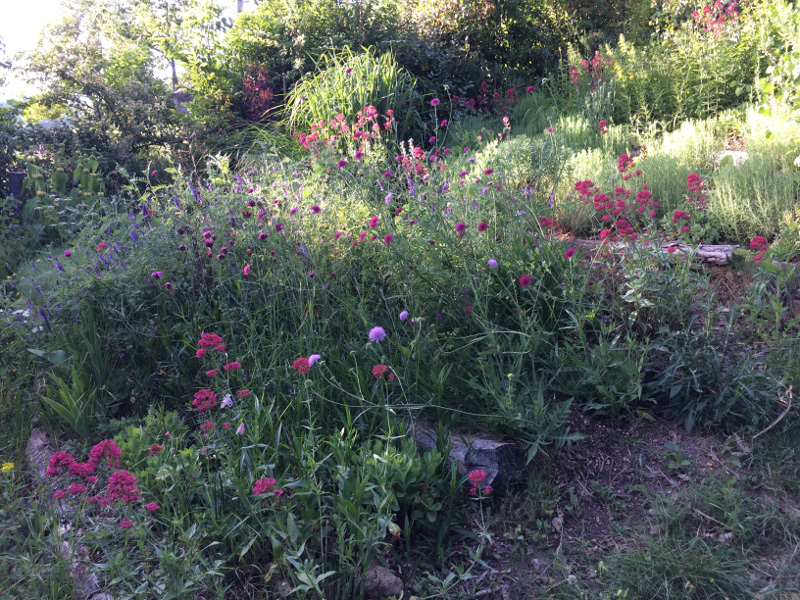
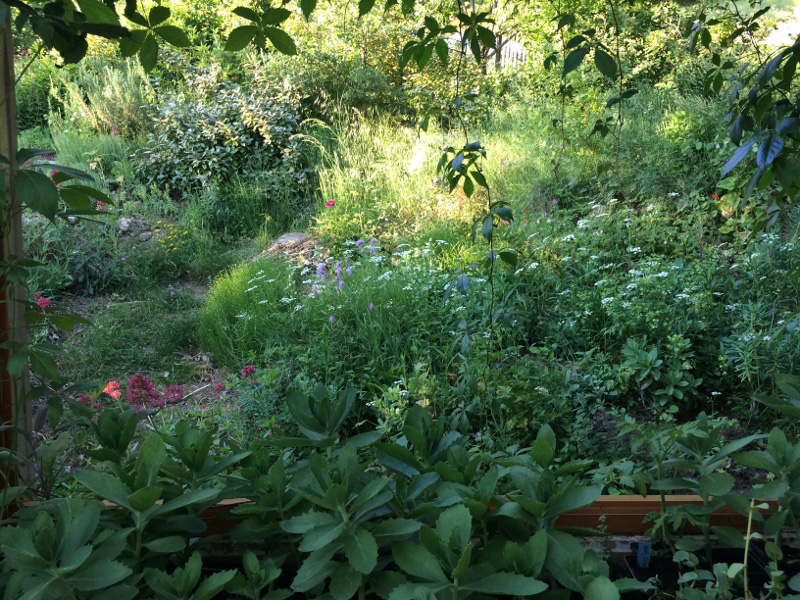
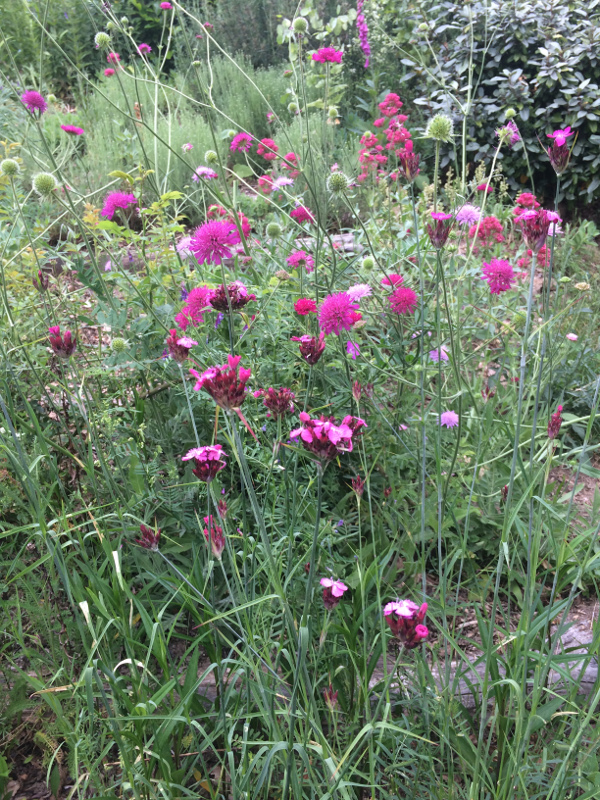
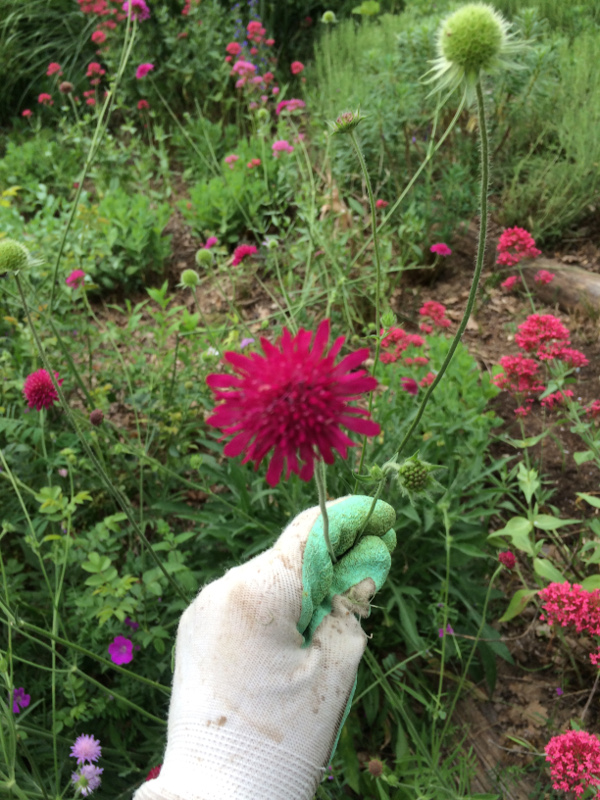
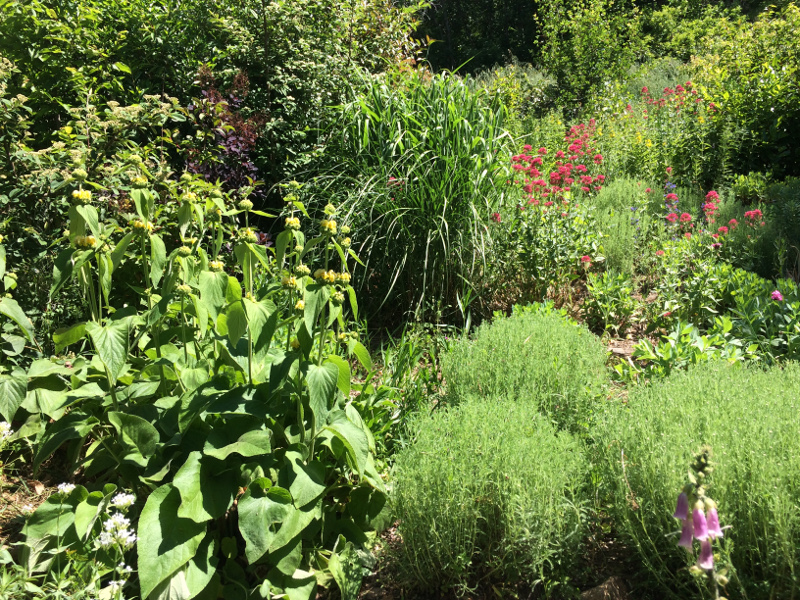
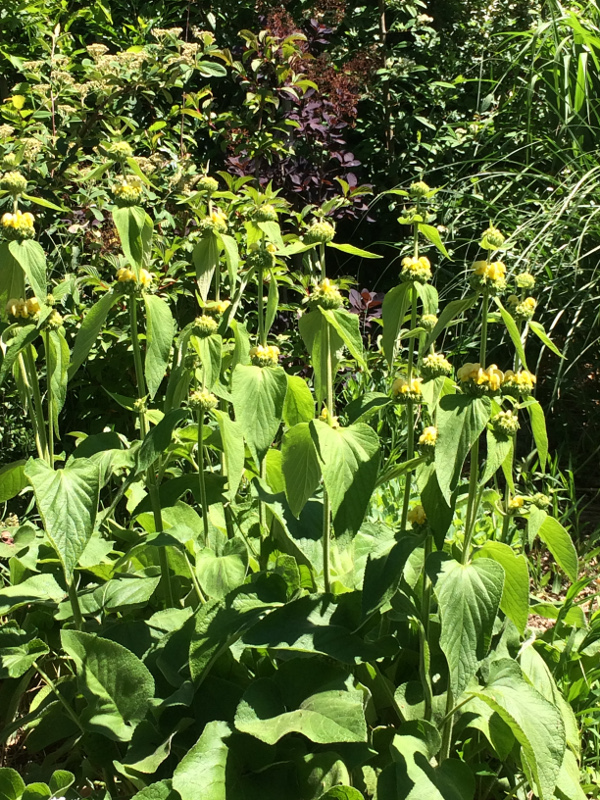
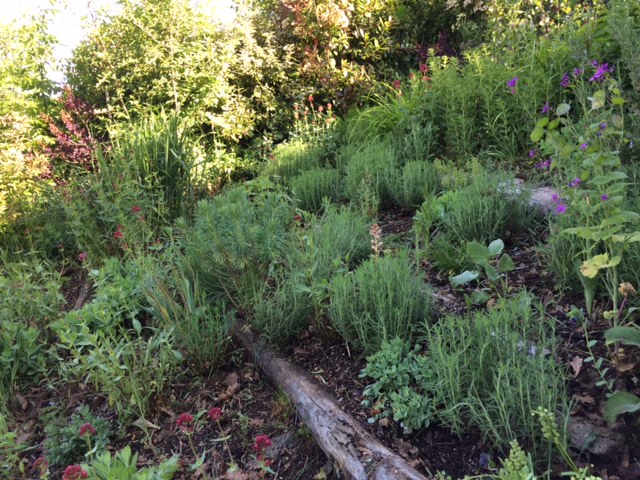
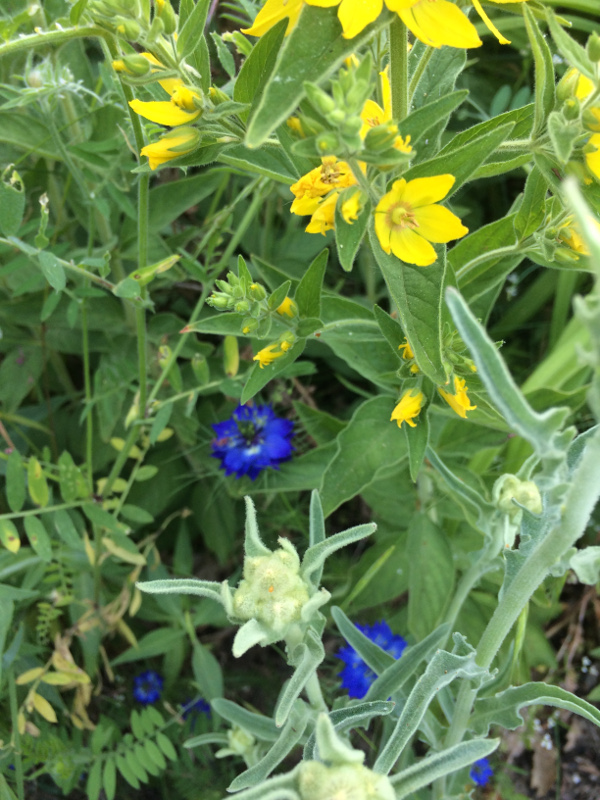
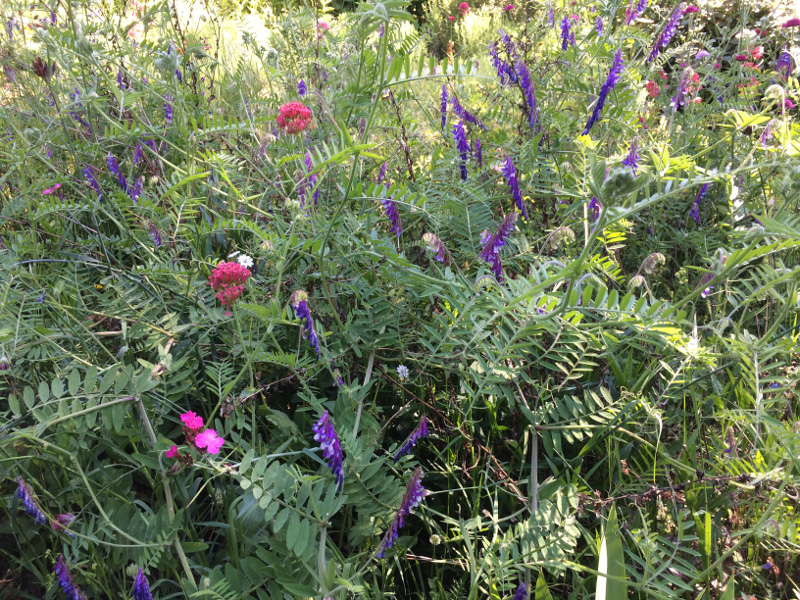
1st June 2017 @ 10:23 pm
How stunning!And what a lovely reward for all those years of work!
2nd June 2017 @ 6:18 am
Thanks Robyn! And I am so so glad I chose to record the whole adventure in the blog. I’d never remember half of what I did!
15th May 2021 @ 4:07 pm
I love that Valarian forms a backbone of the colour – Valarian is the endemic weed in our area and I spend half my life pulling it out! I do leave it when it is in flower!